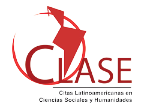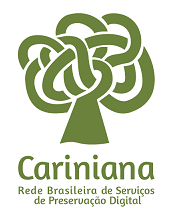Interfaces as metacommunication: contribution of semiotic engineering in representation in cyberspace
DOI:
https://doi.org/10.5433/1981-8920.2016v21n1p80Keywords:
Interfaces, Metacommunication, Semiotic Engineering, Semiotic, Knowledge RepresentationAbstract
Introduction: The interaction in cyberspace can be seen as a process of reciprocal information, in which the designer should indicate how else can act. In this process, the informational guy is not a passive agent, it is called the interpretation. Metacommunication leads the designer to worry about predicting the needs taking into account the vision of who this guy is, what he seeks in the interface and through. Objective: To analyze the interfaces as the designer Metacommunication in cyberspace for identify the contribution of Semiotic Engineering for the designer in the process of signification and representation interfaces. Methodology: To make the Document Analysis, used the categorical analysis technique, or a spin-off of Static signs, Dynamic and Metalinguistic of Theory of Semiotic Engineering, comparing them with the triadic division of signs Peirce (Icon, Index and Symbol) in the selected corpus: National Library of Australia and the Library of Congress. Results: It was observed a greater concern of the designer of the US Library of Congress to use the metacommunication, because the designer has created more routes and directions to paths that anticipated the possible intentions of informational subjects in the quest for knowledge. Conclusions: The theory of Semiotic Engineering contributes to the Information Science in the search for better represent the knowledge to bring the concept of interface as Metacommunication designer for informational subject navigating in cyberspace, both interpreters minds and producers of knowledge.Downloads
References
ANDERSEN, Peter Bogh. A theory of computer semiotics. Cambridge: Cambridge University Press, 1997.
ASSIS, Juliana de; MOURA, Maria Aparecida. Folksonomia: a linguagem das tags. Encontros Bibli: Revista Eletrônica de Biblioteconomia e Ciência da Informação, Florianópolis, v. 18, n. 36, p. 85-106, jan./abr. 2013. Disponível em: https://periodicos.ufsc.br/index.php/eb/article/view/15182924.2013v18n36p85/24523>. Acesso em: 14 out. 2014.
BLUMER, Herbert. A natureza do interacionismo simbólico. In: MORTENSEN, C. D. Teoria da comunicação: textos básicos. São Paulo: Mosaico, 1980. p.119-138.
BRUNO, Fernanda Gloria. Mediação e Interface: incursões tecnológicas nas fronteiras do corpo. In: SILVA, D. F.; FRAGOSO, S. (Org.s). Comunicação na cibercultura. São Leopoldo, RS: Ed. Unisinos, 2001. p. 191-215. Disponível em: http://www.ekac.org/USINOSMedInterface.pdf>. Acesso em: 2 dez. 2014.
CAIXETA, Mário; SOUZA, Renato Rocha. Representação do conhecimento: história, sentimento e percepção. Revista Informação & Informação, Londrina, v. 13, n. 2, p.34-55, jul./dez. 2008. Disponível em: http://www.uel.br/revistas/uel/index.php/informacao/article/view/1815/16 88>. Acesso em: 12 jun 2014.
GODOY, Arilda Schimdt. Pesquisa qualitativa: tipos fundamentais. Revista de Administração de Empresas, São Paulo, v. 35, n. 3, p. 2029. maio/jun. 1995. Disponível em: http://www.producao.ufrgs.br/arquivos/disciplinas/392_pesquisa_qualitativa_godoy2.pdf> Acesso em: 30 maio 2014.
LEITÃO, Carla Faria; SILVEIRA, Milene Selbach; SOUZA, Clarisse Sieckenius de. Uma introdução à engenharia semiótica: conceitos e métodos. 2013. Disponível em: http://www2.serg.inf.pucrio.br/docs/Leitao-Silveira-deSouza-Tutorial-IHC2013.pdf>. Acesso em: 12 mar. 2015.
LIBRARY OF CONGRESS. Disponível em: https://www.loc.gov/>. Acesso em: 20 mar. 2015.
MARCONDES, Carlos Henrique. Representação e economia da informação. Revista Ciência da Informação, Brasília, v. 30, n. 1, p. 6170, jan./abr. 2001. Disponível em: http://www.scielo.br/scielo.php?script=sci_arttext&pid=S0100-19652001000100008&lng=en&nrm=iso>. Acesso em: 20 mar. 2014.
MORVILLE, Peter; ROSENFELD, Louis. Information architecture for the world wide web. 3. ed. Sebastopol, CA: O’Reilly, 2006.
NATIONAL LABRARY OF AUSTRALIA. Disponível em: http://www.nla.gov.au/>. Acesso em: 20 abr. 2015.
OLIVEIRA, Henry Poncio Cruz de. Arquitetura da informação pervasiva: contribuições conceituais. 2014. 202f. Tese (Doutorado em Ciência da Informação) – Faculdade de Filosofia e Ciências, Universidade Estadual Paulista, Marília, 2014.
PEIRCE, Charles Sanders. Semiótica. Tradução J. Teixeira Coelho. São Paulo: Perspectiva, 1977.
PEIRCE, Charles Sanders. The Collected Papers of Charles Sanders Peirce. 1931. CP 8.179. Disponível em: http://www.4shared.com/document/oRnzQCug>. Acesso em: 20 abr. 2015. (vol. 1-8, citado CP seguido pelo número do volume e número do parágrafo).
SANTAELLA, Lucia. A teoria geral dos signos: como as linguagens significam as coisas. São Paulo: Pioneira, 2000.
SOUZA, Clarisse Sieckenius de. The semiotic engineering of humancomputer interaction. Cambridge, MA: The MIT Press, 2005.
SOUZA, Clarisse Sieckenius de. The semiotic engineering of user interface languages. International Journal of Man-Machine Studies, London, v. 39, p. 753-773, 1993.
VIDOTTI, Silvana Aparecida Borsetti Gregório; CUSIN, César Augusto; CORRADI, Juliane Adne Mesa. Acessibilidade digital sob o prisma da Arquitetura da Informação. In: GUIMARÃES, José Augusto Chaves; FUJITA, Mariângela Spotti Lopes. Ensino e pesquisa em Biblioteconomia no Brasil: a emergência de um novo olhar. São Paulo: Cultura Acadêmica, 2008.
WALKER, John. Through the looking glass. In: ______. The autodesk file: bits of history, words of experience. Disponível em: https://www.fourmilab.ch/autofile/www/chapter2_69.html#SECTION00690000000000000000 >. Acesso em: 15 maio 2015.
WITTER, Geraldina Porto. Pesquisa Bibliográfica, Pesquisa documental e Busca de informação. Estudos de Psicologia, Campinas, v.7, n.1, p. 5-30, jan. /jul. 1990.
WURMAN, Richard Saul. Ansiedade de Informação: como transformar informação em compreensão. São Paulo: Cultura Editores Associados, 1991.
Downloads
Published
How to Cite
Issue
Section
License
A revista se reserva o direito de efetuar, nos originais, alterações de ordem normativa, ortográfica e gramatical, com vistas a manter o padrão culto da língua e a credibilidade do veículo. Respeitará, no entanto, o estilo de escrever dos autores. Alterações, correções ou sugestões de ordem conceitual serão encaminhadas aos autores, quando necessário.
O conteúdo dos textos e a citação e uso de imagens submetidas são de inteira responsabilidade dos autores.
Em todas as citações posteriores, deverá ser consignada a fonte original de publicação, no caso a Informação & Informação.
















